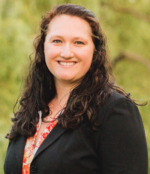Development of SEBoK v. 2.5
This version of the SEBoK was released 15 October 2021. This release included:
- An update of the main page - we have taken your feedback to streamline the SEBoK landing page to get you into the content you're interested in more quickly.
- New Editor's Corner - the former Letter from the Editor is now the Editor's Corner, refocused on the current and emerging trends in systems engineering. Check it out for our Editor in Chief's current thoughts on the metaverse and the impact on systems.
- New sponsors and sponsorship packages - you will notice a number of new sponsors and updates to the sponsorship packages available. Please join us in thanking our sponsors for their support of the SEBoK!
- New navigation - the left-hand menu has gone through a major overhaul to make it easier for you find the information you need and retire information that is no longer as relevant, as well as to load more quickly.
- The SEBoK users provided dozens of comments - from minor corrections to recommendations on terminology and reference updates to broad discussions about the transformation of the discipline. The Editorial Board has addressed all resolved comments in the wiki and will carry forward any comments still under discussion in version 2.6.
- Behind the scenes, we updated to the latest version of MediaWiki, tightened up our IT infrastructure, and made some adjustments to improve performance.
Governing Board for version 2.5
The three SEBoK steward organizations – the International Council on Systems Engineering (INCOSE), the Institute of Electrical and Electronics Engineers Systems Council (IEEE-SYSC), and Stevens Institute of Technology – provide the primary funding and resources needed to sustain and evolve the SEBoK and make it available as a free and open resource to all. The stewards appoint the BKCASE Governing Board to be their primary agents to oversee and guide the SEBoK. The stewards appoint the SEBoK Editor in Chief to manage the SEBoK and oversee the Editorial Board.
The BKCASE Governing Board included:
- Representing the The International Council on Systems Engineering (INCOSE)
- Art Pyster (Governing Board Chair), Emma Sparks
- Representing the Systems Engineering Research Center (SERC)
- Thomas McDermott, Cihan Dagli
- Representing the IEEE Systems Council (IEEE-SYSC)
- Stephanie White, Bob Rassa
Past governors include Andy Chen, Richard Fairley, Kevin Forsberg, Paul Frenz, Richard Hilliard, John Keppler, Bill Miller, David Newbern, Ken Nidiffer, Dave Olwell, Massood Towhidnejad, Jon Wade, David Walden, and Courtney Wright. The governors would especially like to acknowledge Andy Chen and Rich Hilliard, IEEE Computer Society, who were instrumental in helping the governors to work within the IEEE CS structure and who supported the SEBoK transition to the IEEE Systems Council.
SEBoK v. 2.5 Editorial Board
The SEBoK Editorial Board is chaired by the Editor in Chief, who provides the strategic vision for the SEBoK. The EIC is supported by a group of Editors, each of whom are responsible for a specific aspect of the SEBoK. The EIC and Editorial Board are supported by the Managing Editor, who handles all day-to-day operations. The EIC, Managing Editor, and Editorial Board are supported by a Student Editor, Madeline Haas, whose hard work and dedication are greatly appreciated.
| SEBoK Editor in Chief | |
|---|---|
|
University of South Alabama Responsible for the appointment of SEBoK Editors and for the strategic direction and overall quality and coherence of the SEBoK. | |
| SEBoK Managing Editor | |
|---|---|
|
Systems Engineering Research Center nicole.hutchison@stevens.edu or emtnicole@gmail.com Responsible for the the day-to-day operations of the SEBoK and supports the Editor in Chief. | |
Each Editor has his/her area(s) of responsibility, or shared responsibility, highlighted in the table below.
| SEBoK Part 1: SEBoK Introduction |
|---|
University of South Alabama rcloutier@southalabama.edu |
| SEBoK Part 2: Foundations of Systems Engineering | |
|---|---|
Airbus and International Society for the System Sciences Responsible for the System Science Foundations of System Engineering. | |
| Assistant Editor: Dov Dori
Massachusetts Institute of Technology (USA) and Technion Israel Institute of Technology (Israel) Responsible for the Representing Systems with Models knowledge area |
Assistant Editor: Duane Hybertson
MITRE (USA) Jointly responsible for the Systems Fundamentals, Systems Science and Systems Thinking knowledge areas. |
| Assistant Editor: Peter Tuddenham
College of Exploration (USA) |
Assistant Editor: Cihan Dagli
Missouri University of Science & Technology (USA) Responsible for the Systems Approach Applied to Engineered Systems knowledge areas. |
| SEBoK Part 3: Systems Engineering and Management | |
|---|---|
JTConsulting
| |
| Assistant Editor: Phyllis Marbach
INCOSE LA [USA] |
Assistant Editor:
|
| Assistant Editor: | Assistant Editor: |
| Assistant Editor: | Assistant Editor: |
| SEBoK Part 4: Applications of Systems Engineering | |
|---|---|
Systems Engineering Research Center (SERC) tmcdermo@stevens.edu | |
| Assistant Editor: Javier Calvo-Amodio
Oregon State University |
Assistant Editor: Judith Dahmann
MITRE Corporation (USA) Jointly responsible for Product Systems Engineering and Systems of Systems (SoS) knowledge areas. |
| Assistant Editor: Michael Henshaw
Loughborough University (UK) Jointly responsible for Product Systems Engineering and Systems of Systems (SoS) knowledge areas | |
| SEBoK Part 5: Enabling Systems Engineering | |
|---|---|
Systems Engineering Research Center nicole.hutchison@stevens.edu | |
| Assistant Editor: Emma Sparks
Cranfield University Jointly responsible for the Enabling Individuals and Enabling Teams knowledge areas. |
Assistant Editor: Rick Hefner
California Institute of Technology |
| Assistant Editor: Bernardo Delicado
INCOSE/Indra Sistemas | |
| SEBoK Part 6: Related Disciplines | |
|---|---|
George Mason University (USA) apyster@gmu.edu | |
| SEBoK Part 7: Systems Engineering Implementation Examples |
|---|
FAA Technical Center
|
| SEBoK Part 8: Emerging Knowledge |
|---|
Purdue University |
| Assistant Editor: Ha Phuong Le
Purdue University |
Student Editor
Madeline Haas, a student at George Mason University, is currently supporting the SEBoK and we gratefully acknowledge her exemplary efforts. Ms. Haas has also taken responsibility for managing the Emerging Research knowledge area of the SEBoK. The EIC and Managing Editor are very proud of the work Madeline has done and look forward to continuing to work with her.
Editor's Corner
In this version of the SEBoK, the original Letter from the Editor transitioned to the Editor's Corner". This is a space for the Editor in Chief to provide insights or perspective on relevant topics. Going forward, this will be archived when a new version is released.
Rob Cloutier: Musings on the Metaverse
Metaverse. This term has hit me from several different directions the past few months. You may have heard the term in one context or another. It is not new if you are a fan of science fiction, or a gamer. Most sources attribute the term to sci-fi/cyberpunk/dystopian writer Neal Stephenson in his book “Snow Crash” in 1992. My first exposure to this concept was in Tad Williams’ 4-book series “Otherland” first released in 1996. Then there is the Matrix trilogy.
The best way I can characterize the Metaverse is a virtual social and workplace network steeped in virtual reality, augmented reality, and artificial intelligence. And yes, let us throw in another buzzword – blockchain – for good measure. Most of these Metaverses include some form of a currency to buy and sell goods, spells, weapons, knowledge, and property. That currency may even have international currency exchange rates. One instantiation of a Metaverse is actually running on top of an Ethereum blockchain to manage all of the financial transactions – buying and selling of goods, in that Metaverse.
Why am I thinking about the Metaverse? Think “digital twin” and digital thread.
Many of you know I am an industry person turned academic. One of the things that has concerned me the past few years is that we as engineering educators seem to be teaching what we learned or used 5-10 years ago. I have come to the believe that instead (or, maybe in addition to) we should be teaching what our students will need 5 years in the future.
The Metaverse for Systems Engineering. Let me dive further into the deep end here. Think of a virtual reality environment in which teams can gather to build SysML models, that become functioning code, that become engineering designs that can be verified and validated in this environment before it is ever built. The Systems Engineering Research Center (SERC) conducted some preliminary work toward this direction a decade ago for the US Department of Defense (DoD). It was called Graphical CONOPS, but it did not have the vision of becoming the entire engineering design chain. Nor were the tools available then.
Does a lot of this sound familiar? Of course it does. I have seen numerous presentations on “Digital Transformation” by corporations and governments. And tool vendors are working to provide their proprietary solutions to this challenge. Spend some time on Youtube, you will find BMW using a new tool to redesign their factory, Disney designing rides, and NavAir designing aircraft. But what are the challenges facing us as systems engineers to take advantage of these concepts and notions. I believe they are many, but here is my short list:
- Proprietary vendor stacks (the tool vendors have no motivation to work with other vendors)
- Methodology (SysML has shown that tools without corresponding methodologies are bewildering)
- Integration complexity (the tools that are out there today are just too hard to integrate for mere mortals)
- Academic involvement
Let me address that last bullet in closing. I proposed at an INCOSE MBSE workshop a number of years ago that for universities to use these emerging tools and tool integrations, the vendor community needs to step up and create "MBSE in a Box". Or, a “Metaverse in a Box”. One simple install – push a button and the entire suite of tools gets installed. The box needs to include lessons and lesson plans that teach both the concepts and the tool application. These must be free and open to be included in current and future curriculum. Bottom line, this complex implementation must be made simple for it to be integrated into current curriculum, which is already jam packed.
I used to work for a gent that would say technology is “same stuff, different decade”. Considering many of these ideas and concepts have been around for decade(s) now, maybe he was right. One of my favorite sayings is, “It takes a generation, or two, to effect real change”. What I do not understand is: why?
What do you think? Can this community become the catalyst for change? Can we define what a Metaverse for Systems Engineering could become? I would love to hear your thoughts. Please drop a comment using the “Add comment” feature at the bottom of this page. The “Add comment” feature does not capture who is posting the comment. So, if you want a more vibrant interaction with others, please consider including your name and email with your comment. (We recommend using [at] and [dot] if you post your email address.)
Alternately, if you want to initiate a longer conversation with me, drop me a note at rcloutier[at]southalabama[dot]edu. Please put “SE Metaverse” in the subject line to help me sort the mail easier.
With all of that in mind, I hope you enjoy this latest release of the SEBoK.

